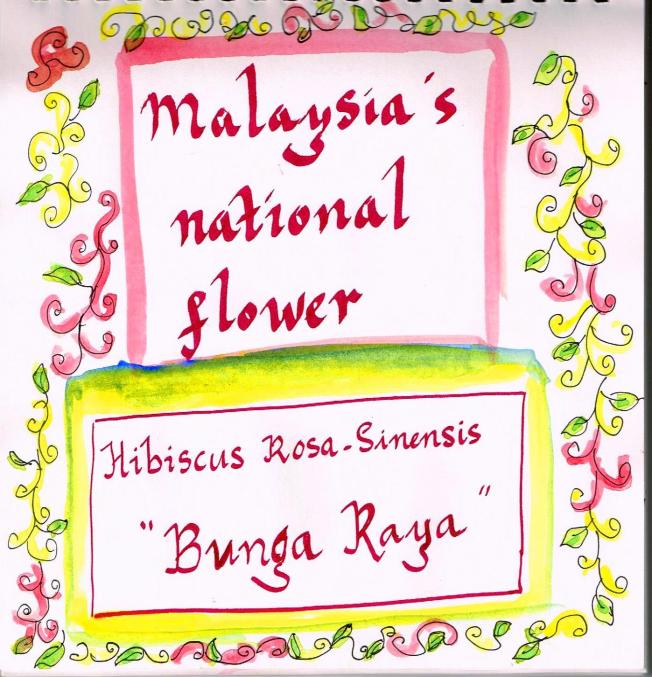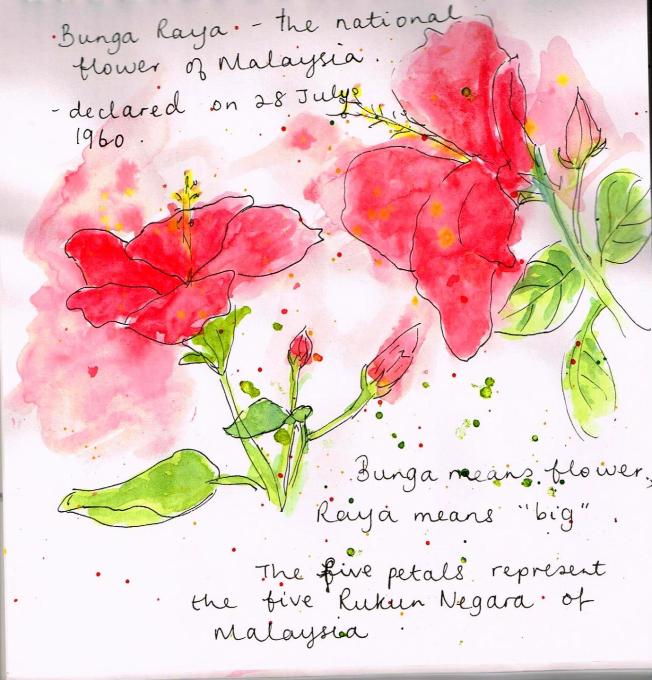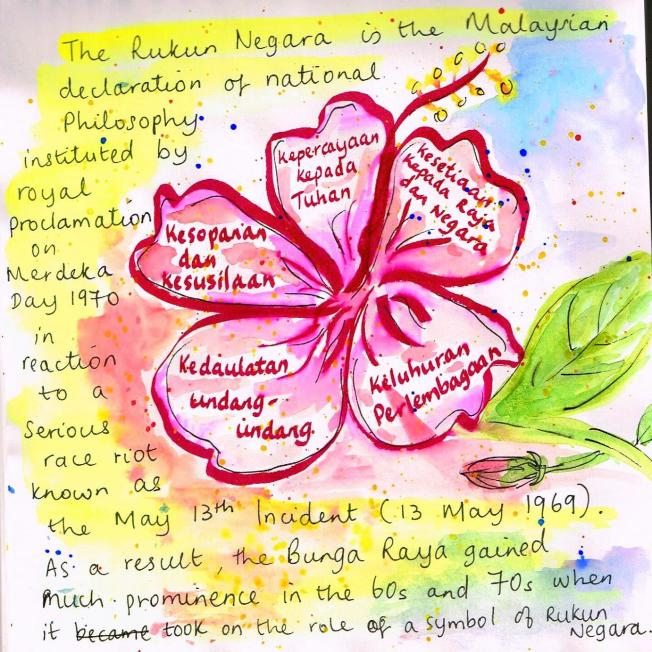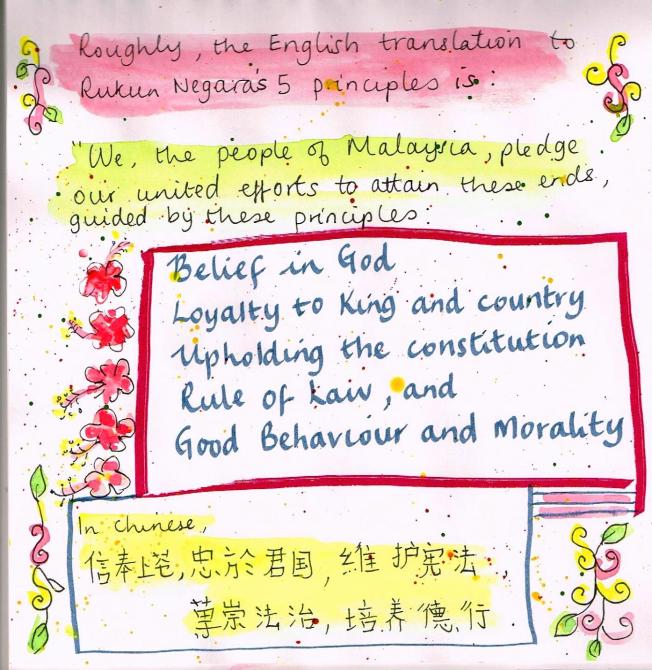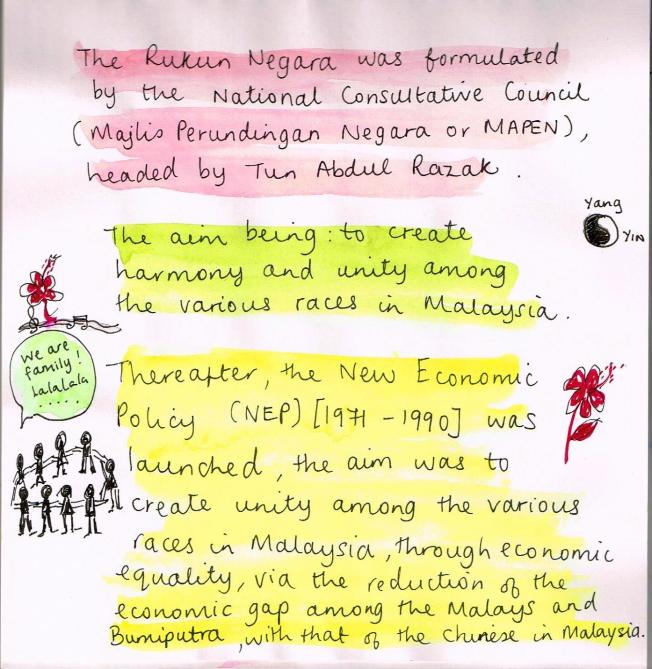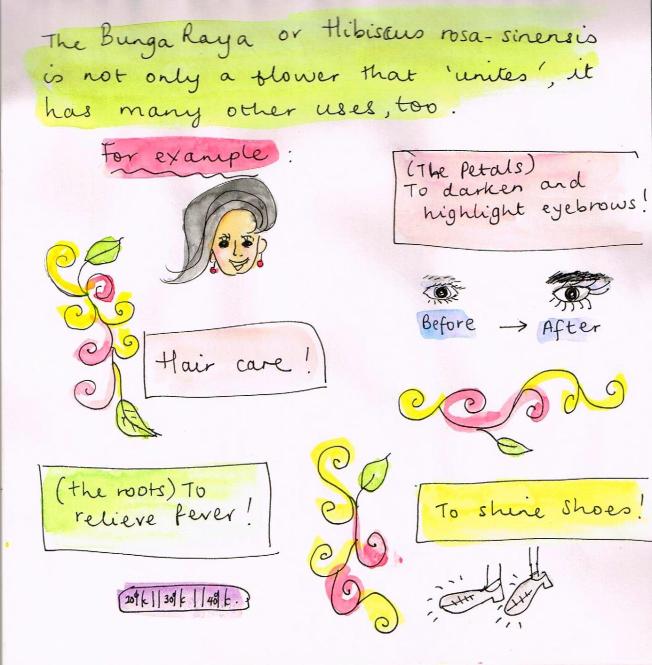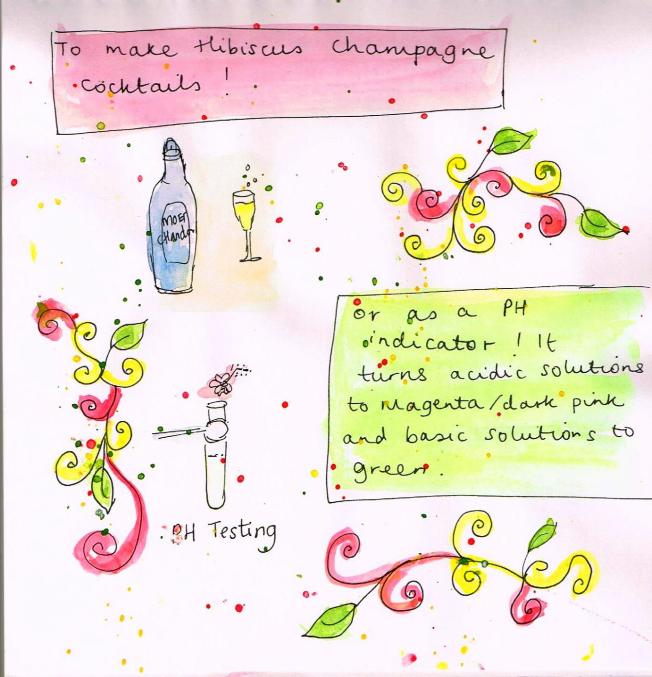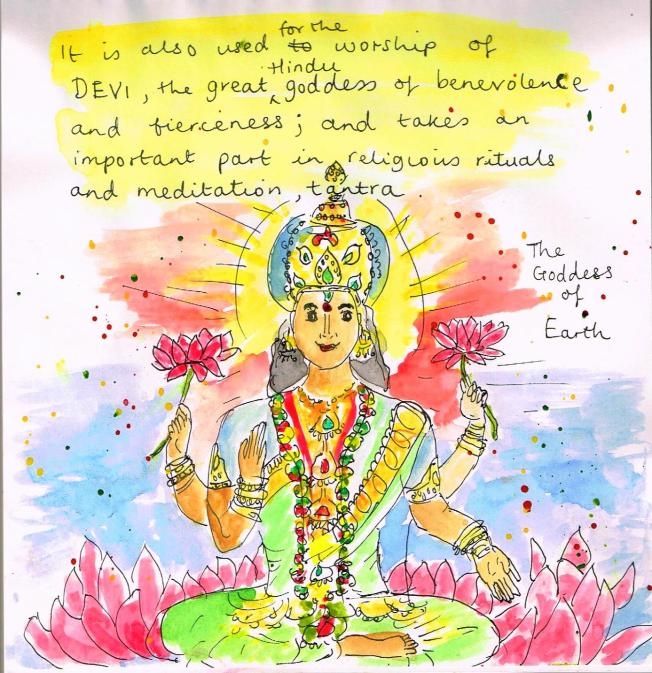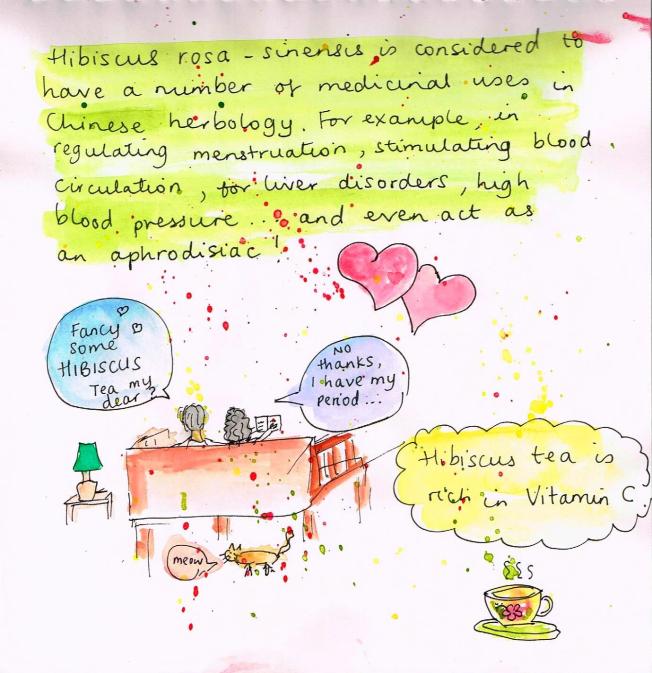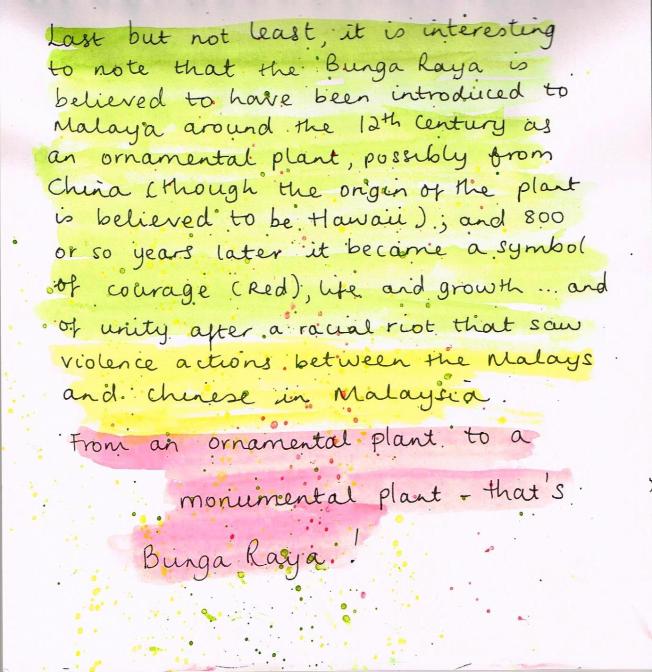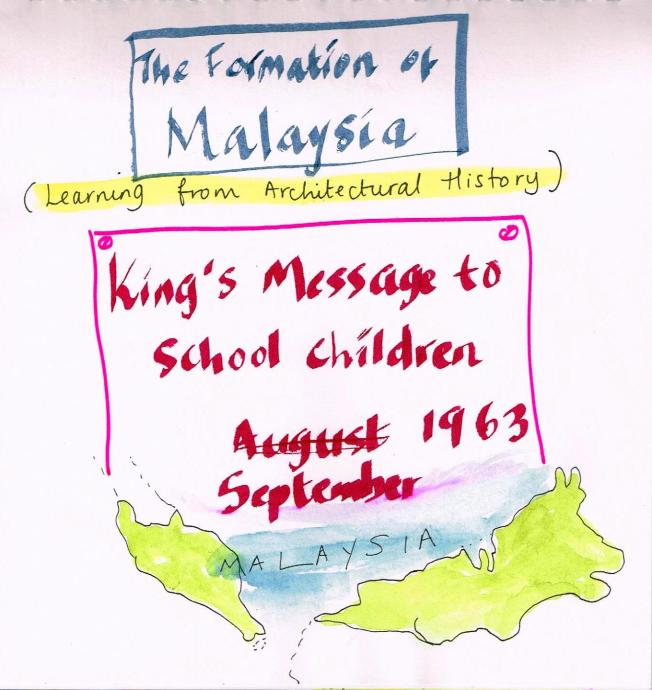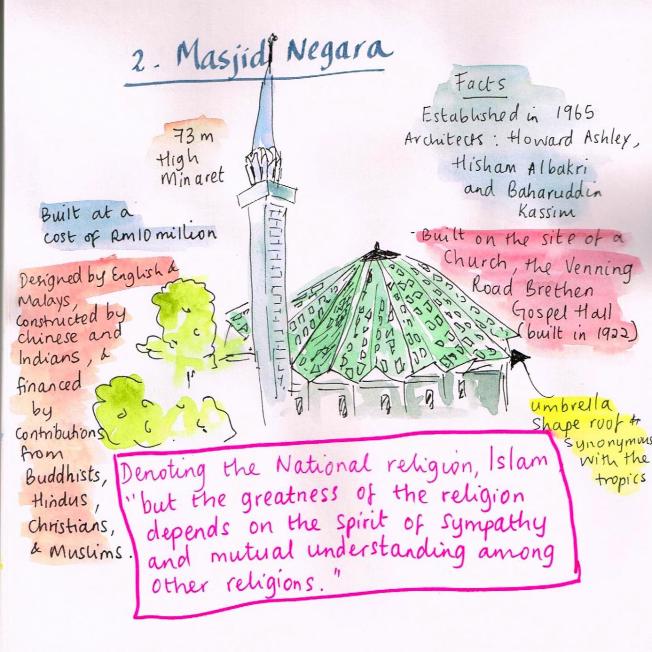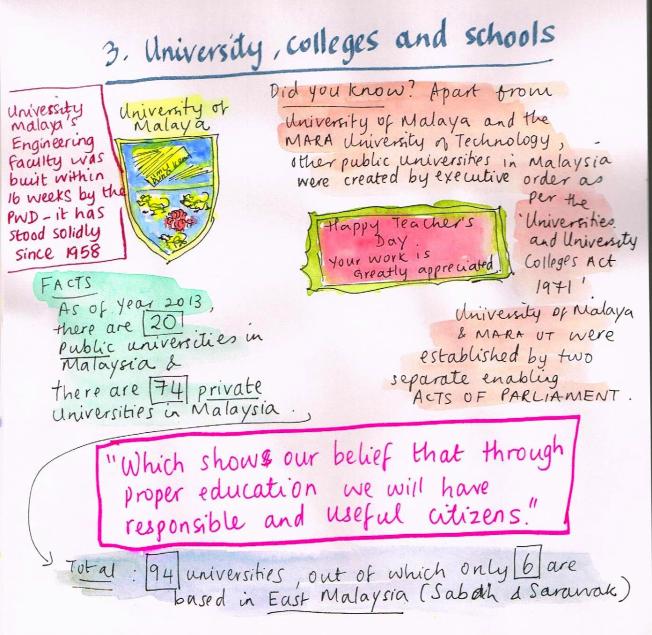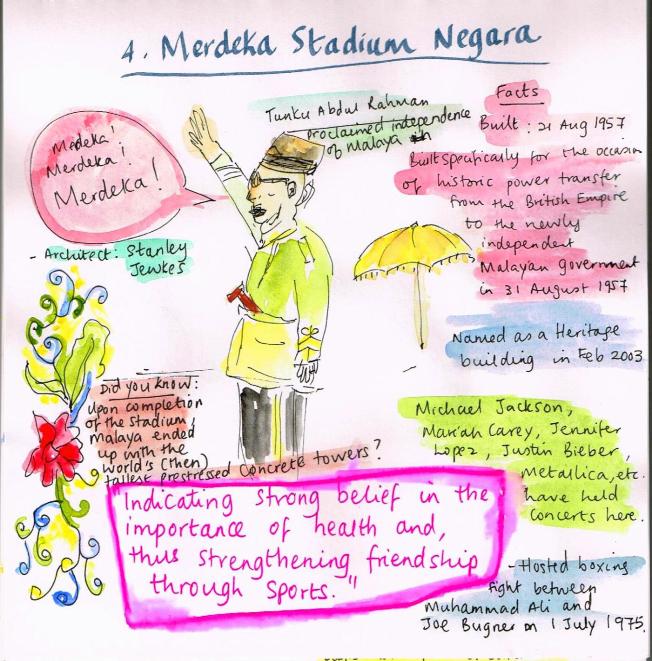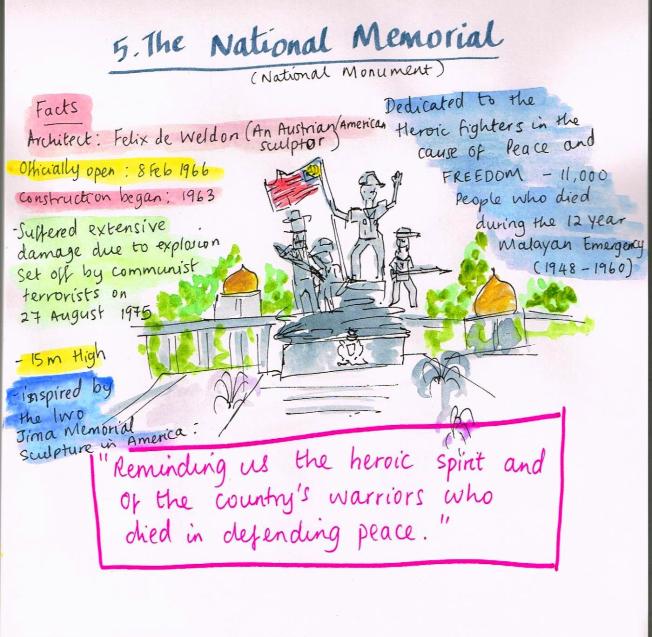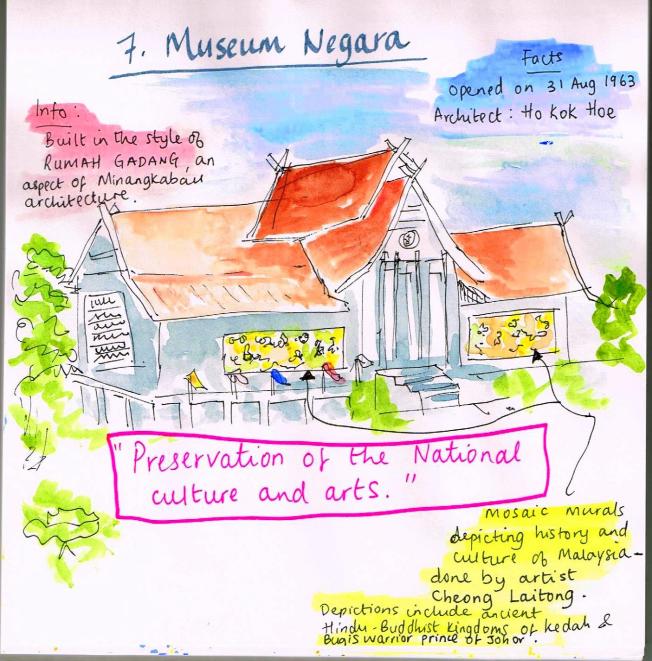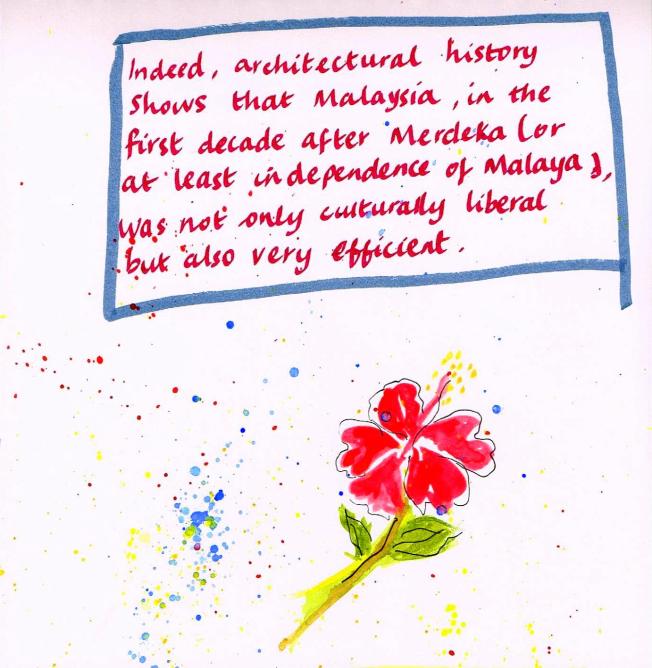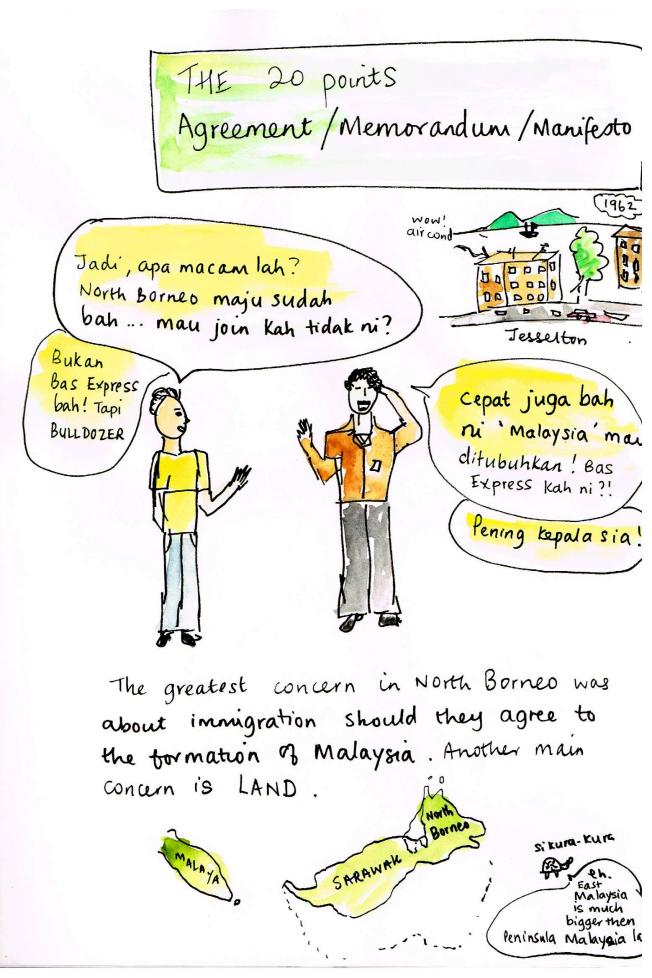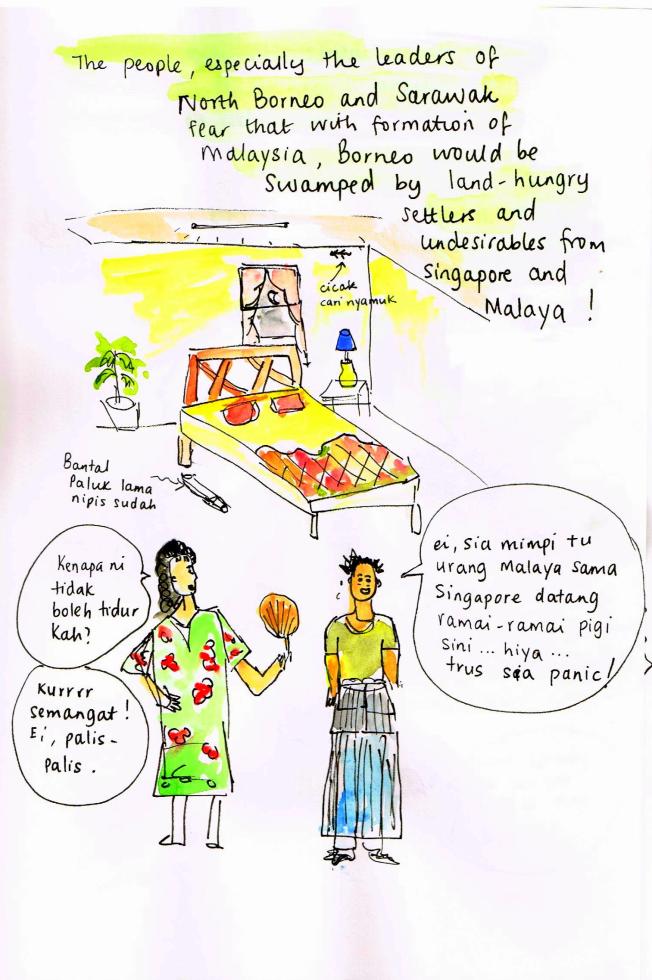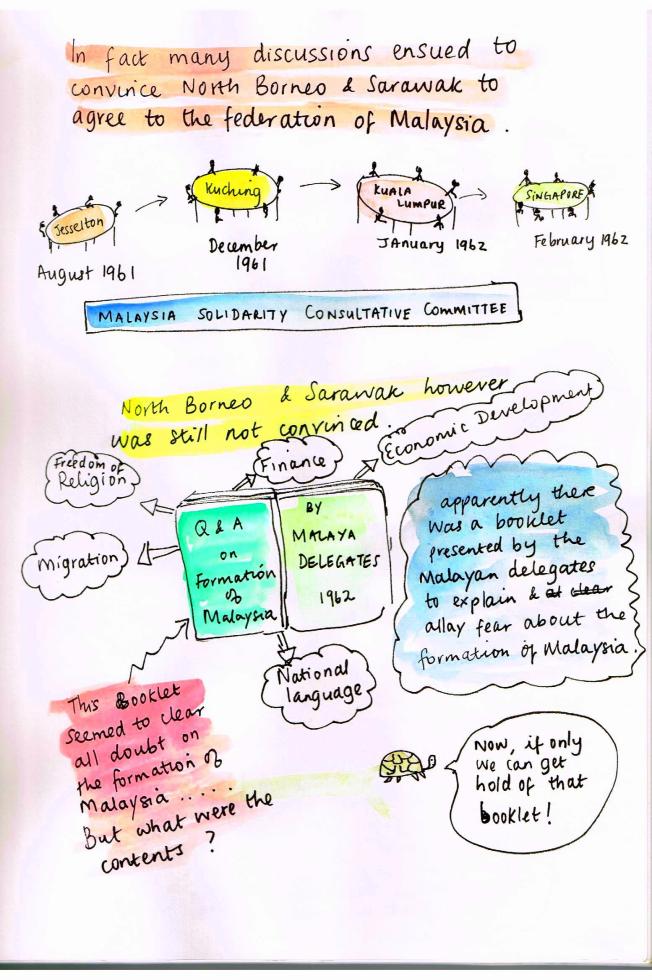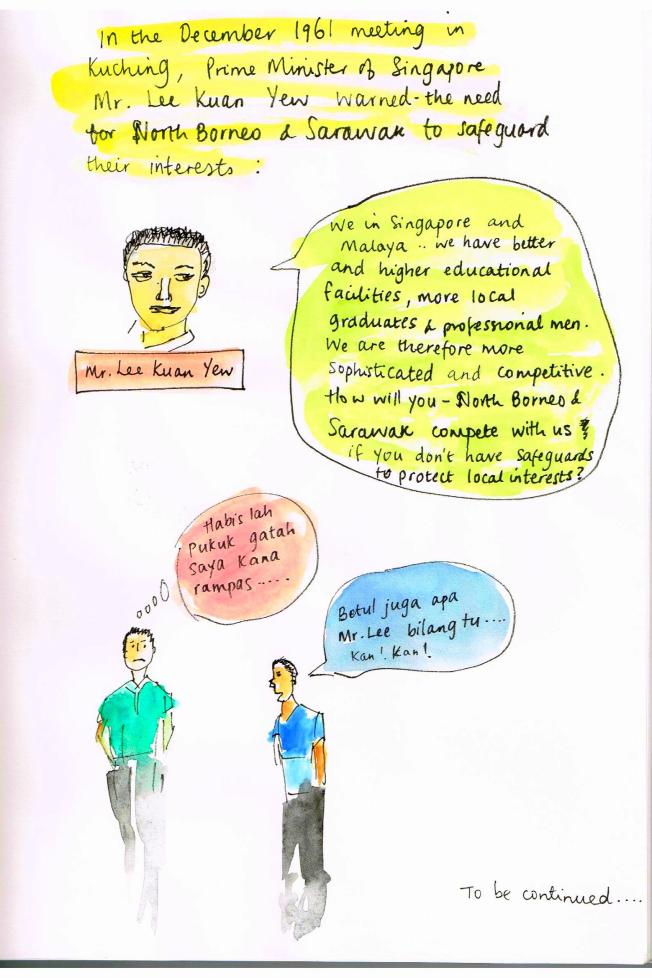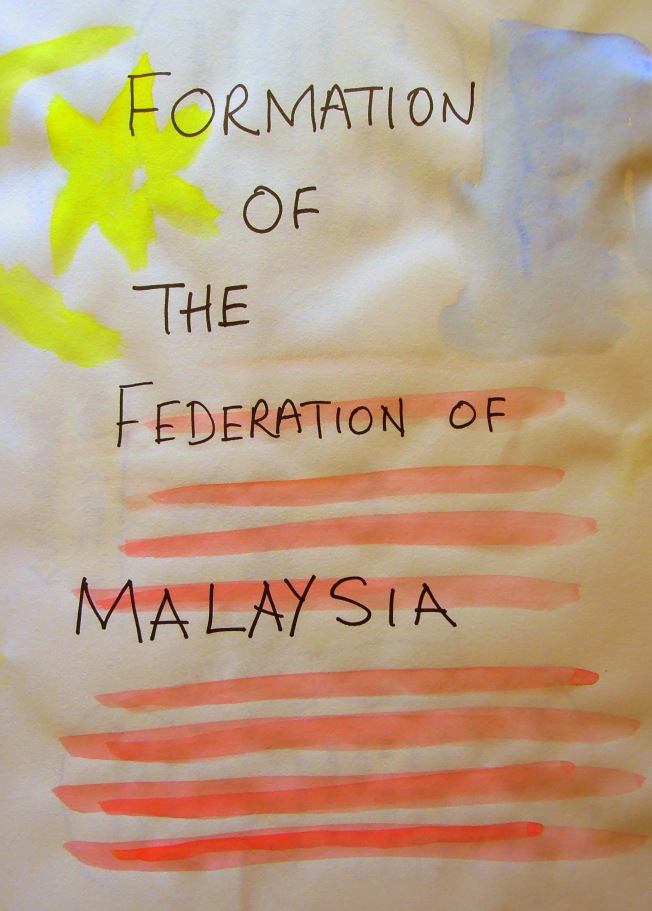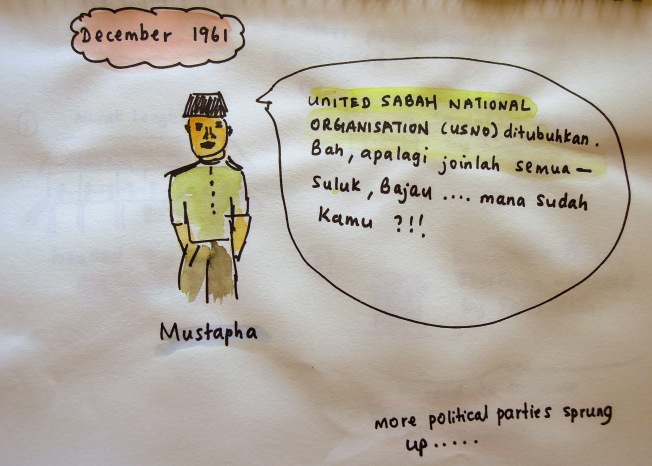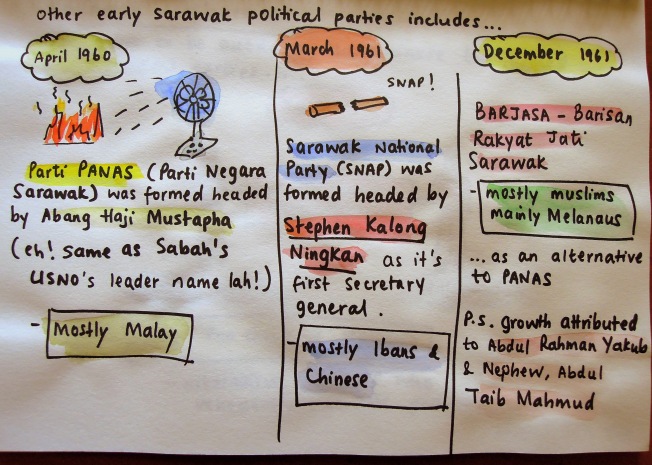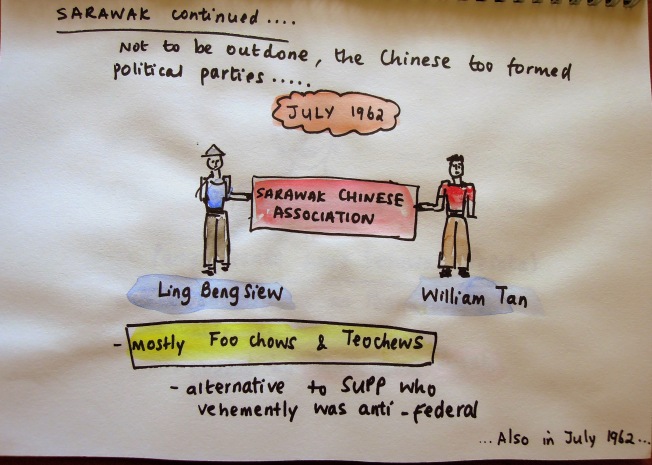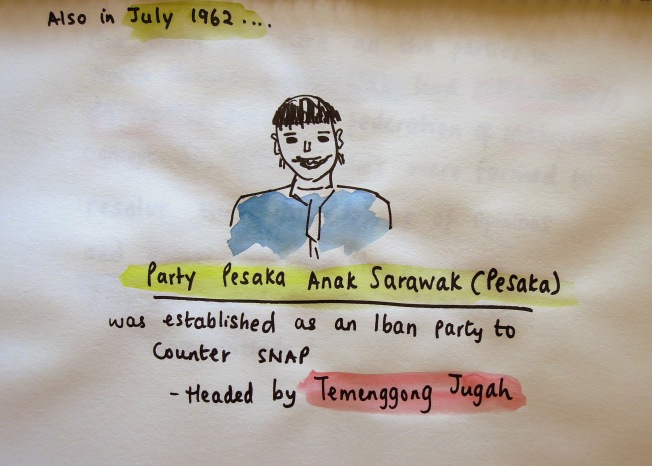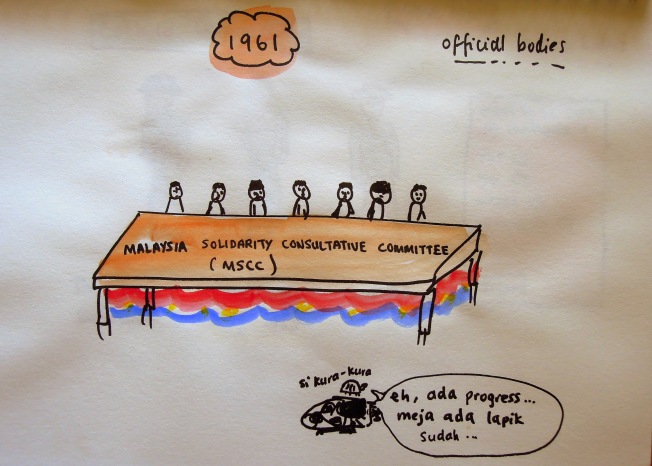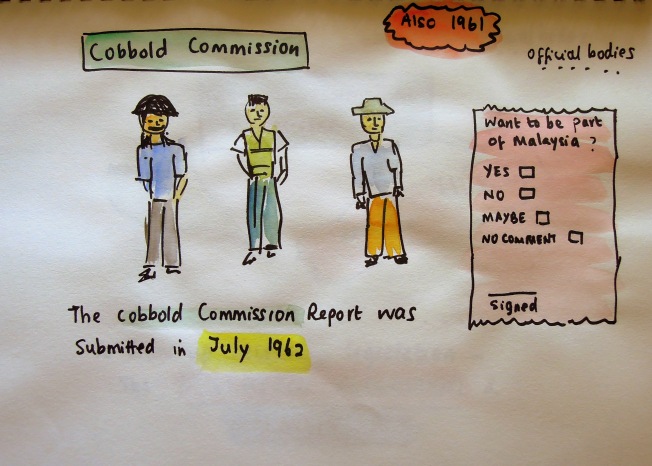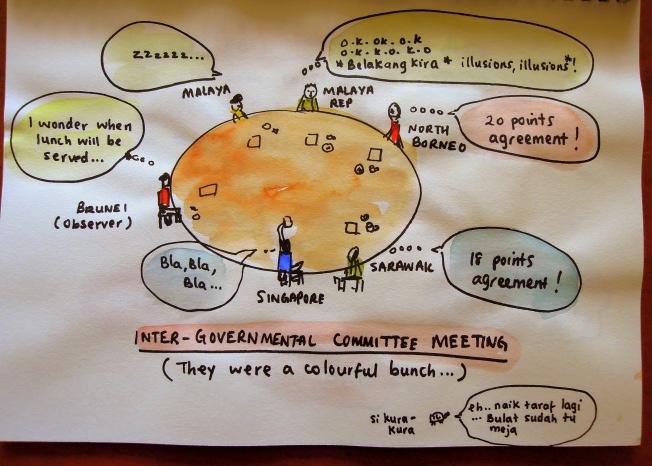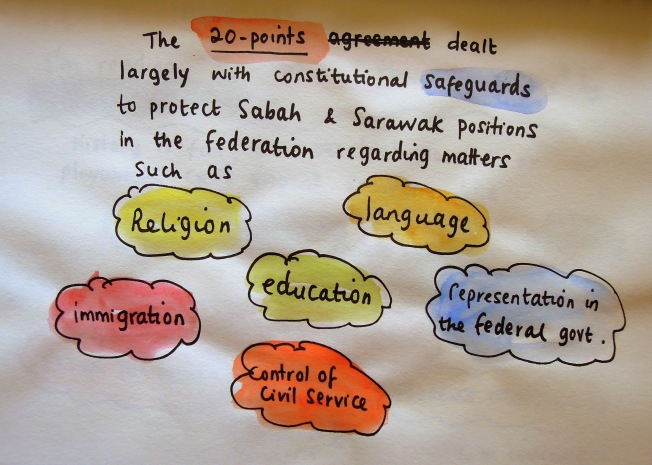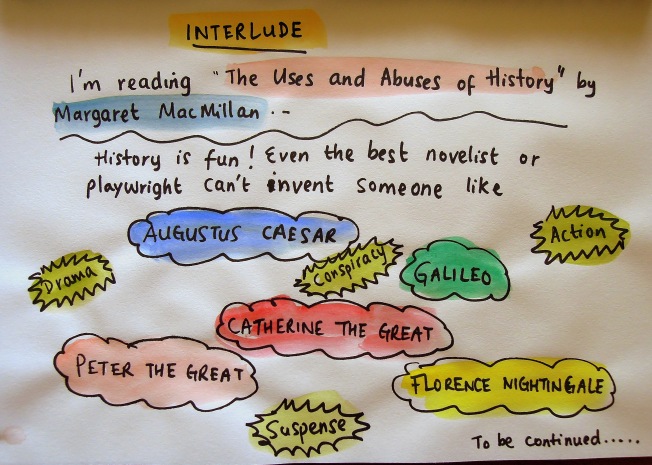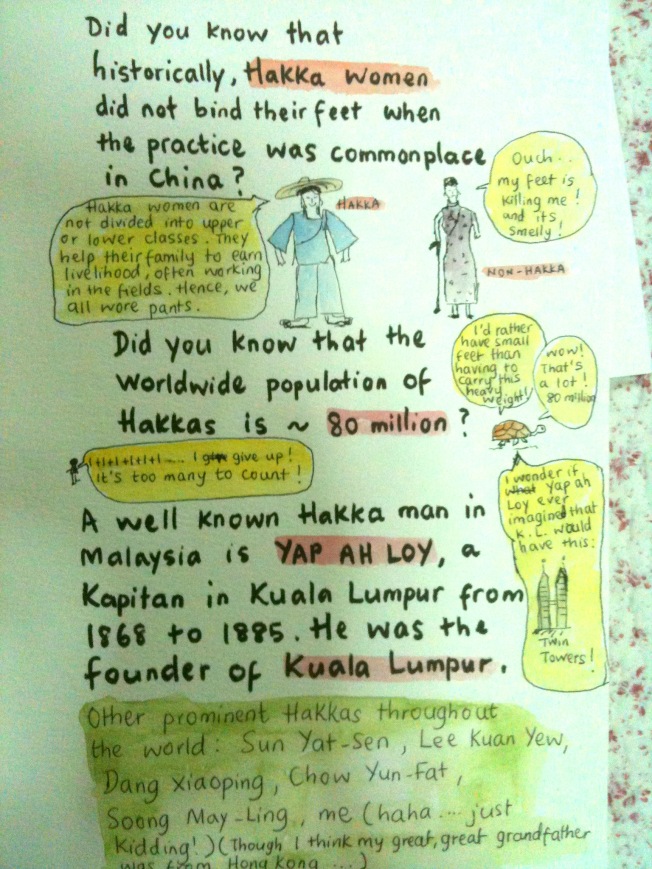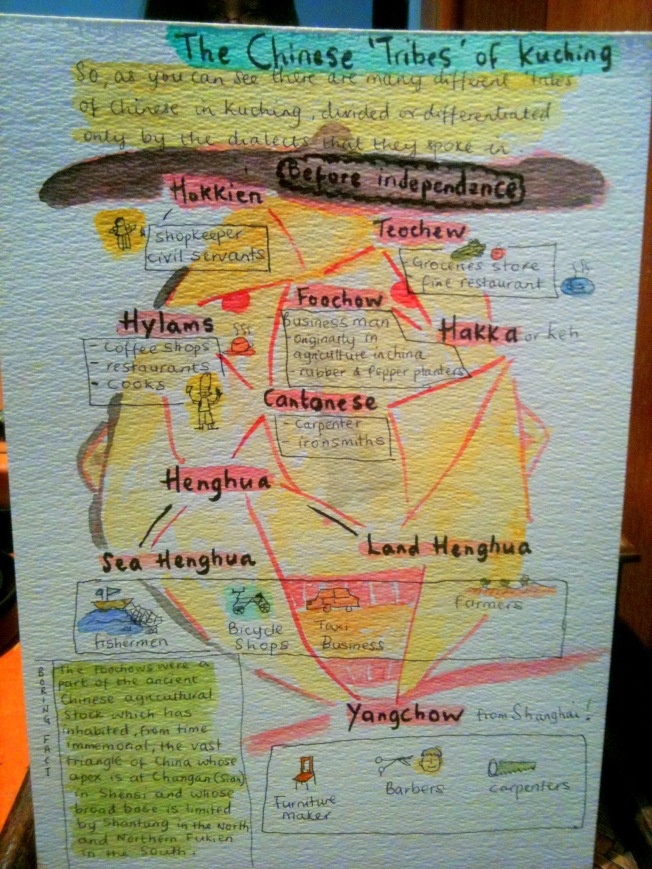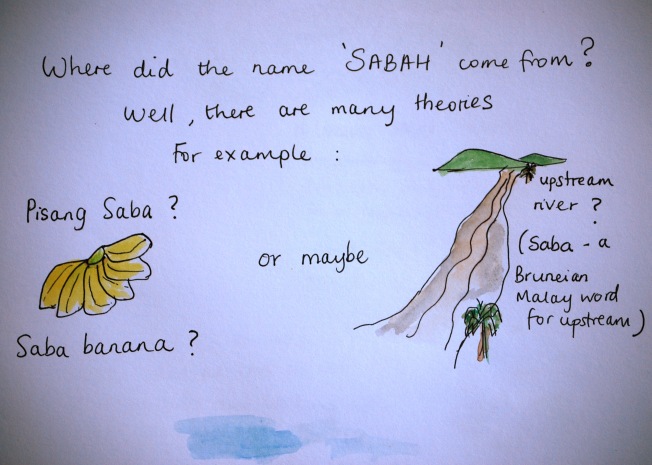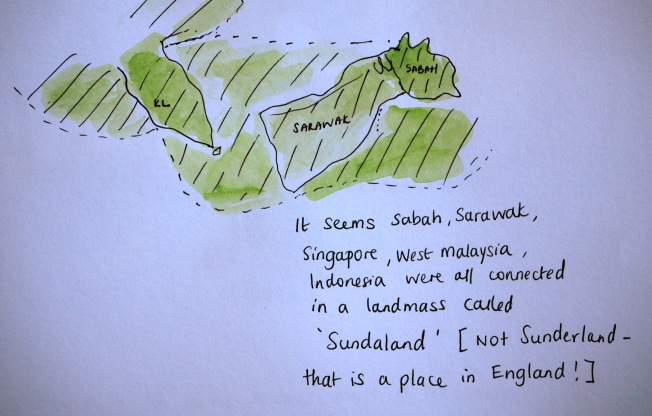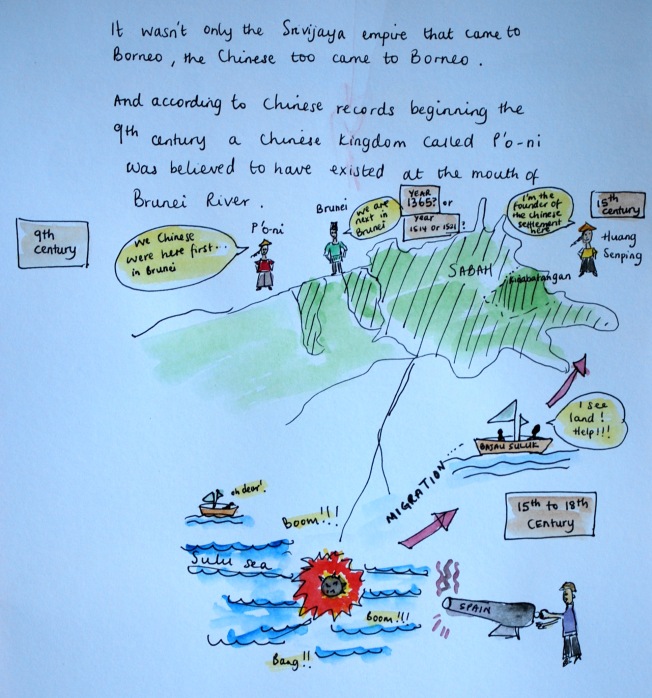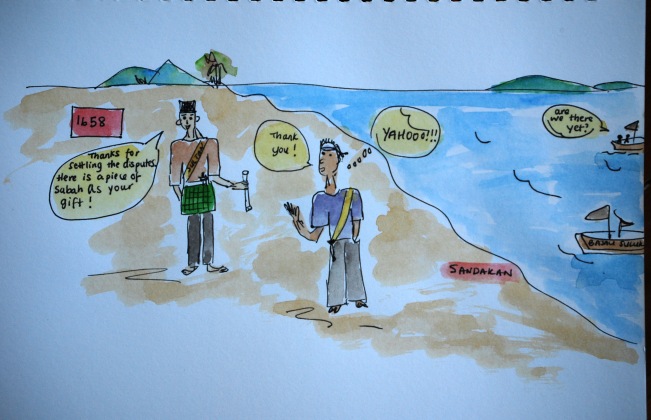As part of a community exhibition held in February 2012 in Kota Kinabalu, I was involved in the research and writing of the historical contents of the exhibition. One of the topic that I researched and did the write-up was on food related history of North Borneo. I did a 5-minute doodles to accompany the write up to give an idea to the real artists who came up with a placemat design (which was part of the exhibited materials handed out to the public). Here are some of those doodles and stories. Of course it would have been easier to look for the photos online but hey, since it takes me only 5-minutes to doodle the item, I decided why not! 🙂
North Borneo Connection to the Famous Twining Tea
Sir Edward Francis Twining , the Governor of North Borneo from 1946 to 1949 was a member of the Twinings Tea family. Twinings, founded by Thomas Twining opened the first known tea room at 216 Strand, London in 1706. That’s more than 300 years ago! Twinings teas are still popular to this day, and are served in some restaurants and café in present day Kota Kinabalu.

I love Earl Grey tea :-)! That distinct Bergamot oil smell.. reminds me of England…
Speaking of England, when I was growing up I remember my mum used Yardley face powder, Made in the UK. In fact, I think my first face powder I used was Yardley, too. However, another very popular face powder in the past (and still available today) was the Sam Fong Face powder which is made from rice powder. I remember my mum used to keep the rice water (water collected after rinsing rice before cooking) and use the rice water to wash her face. It was very common practice in the olden days it seems to use rice water to keep the face clear and keeps the dark spots away! But then again the rice used in those days were organic rice so no chemicals go to your face.
Beauty Products of Yesteryears from edible items
Occasional coconut oil treatment helps to maintain the dark glossy mane and to keep it smooth, healthy and manageable. This coconut oil is extracted from grated coconut heated in a wok over fire slowly till the oil is released. It is then drained and strained to get the oil.
A lady’s other beauty indulgence may consist of a homemade face mask from egg white.
Another beauty item is the Bedak made from rice that has been soaked in water in a clear glass jar for months. The water is changed every once a while. After a few months when the rice is soft, it is then put through a stone mill to further smoothen the texture. This mixture is then hung up to drain the water.
Once drained of water, the rice is then put in a banana leaf rolled conically with an opening at the pointed end. A muslin cloth is laid over a rattan tray and the rice comes out in a nice droplet shape with a gentle squeeze of the banana cone. Sliced pandan leaf is spread over the whole tray to perfume it. These mini droplet-shaped bedak is then laid out in the sun to dry. When it’s dried, the bedak is stored in bottles with the pandan leaf.
For going out, visits to relatives and friends, a lady may choose to apply Sam Fong Pressed Powder or Hoi Tong Phong Hoon with a powder puff. These are imported from China and come in a small decorative box. For weddings and other social occasions, she may use her British inspired Coty brand face powder or Three Beauties pancake.
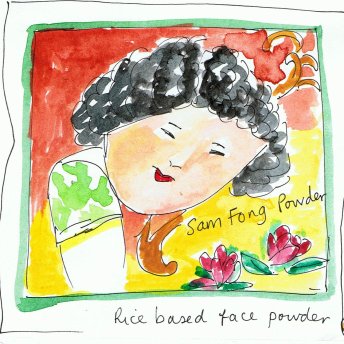
For some reason my doodle made the lady’s face chubby .. Maybe it had something to do with the next doodle perhaps? 😀
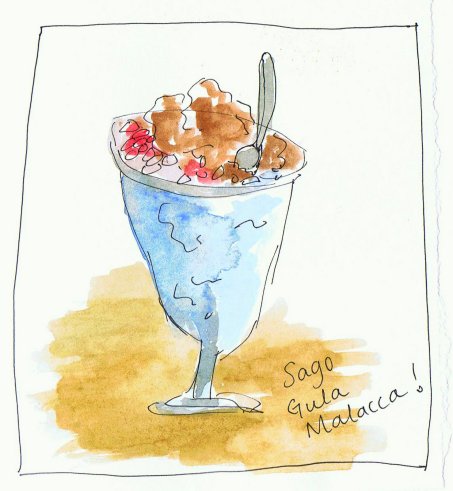
The Sago Gula Malacca was a very popular dessert during the colonial days it seems. After all, one of the main produce that was traded then was Sago. Sago gula Malacca is a cold dessert made of pearl grey sago, compacted as a blancmange, with sauces of coconut milk and burnt molasses. Of course, today there are many different versions of pearl sago dessert and drinks available. You’d be surprise what varieties of sago tea there are available!
But I haven’t yet come across a mooncake flavoured sago tea.

So, what is the story behind mooncake actually? Well, one folk tale refer to the mooncake festival which is usually held in September or early October as a commemoration of the establishment of the Ming Dynasty.
During the Yuan dynasty (A.D.1280-1368) China was ruled by the Mongolian people. Leaders from the preceding Sung dynasty (A.D.960-1280) were unhappy at submitting to foreign rule, and set about to coordinate a rebellion without it being discovered. The leaders of the rebellion, knowing that the Moon Festival was drawing near, ordered the making of special cakes. Backed into each moon cake was a message with the outline of the attack. On the night of the Moon Festival, the rebels successfully attacked and overthrew the government. What followed was the establishment of the Ming dynasty (A.D. 1368-1644).
Today, moon cakes are eaten to commemorate this legend. Some other folk tale connects mooncake festival to the story of Chang Er.
This story is set around 2170 B.C. The earth once had ten suns circling over it, each took its turn to illuminate to the earth. But one day all ten suns appeared together, scorching the earth with their heat. The earth was saved by a strong and tyrannical archer Hou Yi. He succeeded in shooting down nine of the suns.
One day, Hou Yi stole the elixir of life from a goddess. However his beautiful wife Chang Er drank the elixir of life in order to save the people from her husband’s tyrannical rule. After drinking it, she found herself floating and flew to the moon. Hou Yi loved his divinely beautiful wife so much, he didn’t shoot down the moon. Hou Yi built himself a palace in the sun, representing “Yang” (the male principle), in contrast to Chang Er’s home on the moon which represents “Yin” (the female principle). Once a year, on the night of the Mid-Autumn Festival, Hou yi visits his wife. That is the reason why the moon is very full and beautiful on that night. (Story source: http://www.chinesefortunecalendar.com/midfallstory.htm & wikipedia)
So, what does the mooncake got to do with Borneo?
Well, as we know historically and at the present time a large proportion of Borneo’s population are of Chinese descent. Most still celebrate the mooncake festival. Based on my readings and research, one of the earliest shop that sold mooncakes in Sabah was Yuit Cheong coffeeshop .
The following is a shortened version of the Yuit Cheong story which was told by the present proprietor of the coffeeshop.
The Cook that missed the ship
Yuit Cheong of Jalan Pantai, established in 1896, is one of the oldest continuously run business in Kota Kinabalu, Sabah (North Borneo).
A British warship called at Jesselton port in year 1904. From the ship a Shantung Province cook went ashore for sight-seeing. He was totally absorbed by the local natural scenery that he forgot to return to the town and missed the ship. The dejected cook turned to Mr. Leong Shang Chau (owner of Yuit Cheong then) for help. The cook stayed overnight at the shop.
The following day, to the astonishment of the cook, he found that the shop assistants were far below par in baking skills. He decided to teach them the proper way of baking without using preservatives. His recipe emphasized on using a well-balanced quantity of flour and yeast, the correct method of mixing and stirring and the timing of baking in the oven. The bread so baked could last for five weeks.
Yuit Cheong has thus made itself a name in the bakery business and gained instant fame in and around Jesselton town.
A Mr Leong Sheng Woo took over the running of Yuit Cheong, Jesselton shop.
In 1936, he entered into agreements with Harrison Ltd. and Kwong Hup Hin Company to distribute Milkmaid condensed milk and Pirate Brand cigarettes.

He also imported Australian Angel Brand and Key Brand flour from Guthrie and Sime Darby, as well as importing sundry goods such as cooking oil, tea powder flour and Hop Brand yeast from Singapore Hing Hor Ltd and Tai Hing Ltd respectively.
During the Japanese Occupation the supply of rice, sugar, cooking oil and flour were inadequate except for coffee beans and local products like banana, tapioca, sweet potato and peanut which substituted flour for use in bakery. The supply of food was still inadequate during the postwar era. Yuit Cheong was quite lucky to be given the opportunity to bake and supply bread to displaced war survivors (refugees). The flour was supplied by the Australian troops. A loaf of bread was priced at 50 cents while the market price commanded $2.50.
Yuit Cheong was later authorized to sell military daily commodities to civilians. The scene at the shop gained a lot of attention whenever the big crowd rushed for the fresh bread. Yuit Cheong stopped supplying bread to the refugees after the pullout of the Australian troops.
In 1963, Yuit Cheong started to build its own bakery in Australia Square, Jesselton. New modern electrical oven was acquired as well as two experienced bakers specially recruited from Hong Kong.
With these new additions, new and improved varieties of bread, cakes and moon cakes were introduced to Jesselton. It was also the first mechanized bakery in town.
I like to eat Lotus seeds paste mooncake with local Tenom Coffee. Yum!
I think Tenom coffee uses Arabica coffee beans. But during the colonial days Liberica coffee was planted in Borneo.
There are still small scale Liberica coffee planters in Borneo at the present time but it seems Liberica coffee plants do not yield as much coffee beans as other species, so it is not commercially viable.
Here’s something I discovered about Liberica coffee of Borneo:

Liberian (Liberica) coffee was first introduced into Ceylon and then came to the Straits Settlements and then Borneo. The first area in Borneo planted with Liberica coffee was Victoria Estate near Kudat (Northern region of Sabah) which was opened by a Mr. Christian in the early 1880s.
The coffee tree is short and bushy no more than six or seven feet high, usually planted in rows 15 to 18 feet apart; its little white flower has the sweetest and most delicate of scents, and the fruit when ripe is the colour of rosy cherries and about the same size, but elongated like a rugby football. Coffee Robusta, which comes into bearing sooner, is smaller and quite round.
The picking and preparation of coffee in this coffee estate was done by women and small boys. The fruit was brought in and placed to soak for a night in jars full of water. Next morning it is placed through a pulper, the cherries poured down a contraption that separated the flesh of the cherries from the beans. The beans are put back into the water-jars and left to ferment, being stirred every morning. The water turns the colour of rich mud and, towards the fourth day, acquires a bilious mildewy tinge, giving a sickly smell. By the fifth day the slippery outer coating of the beans come off and they are ready to be washed. They are then spread out on mats in the sun to dry for four to five days.
However, the Javanese had a simpler method of extracting the beans from the cherries. They popped the cherries into their mouth, giving the cherries a crunch and spat out the beans and the skin at an amazing rate!
Once dry the beans were placed in little brown parchment covers which were removed by pounding in a kind of wooden mortar with a piece of wood; the broken parchment was finally winnowed away and the bean, in the fine cover that is called the silver skin, remains; before the coffee was put on the European market this silver skin is removed and the bean is polished using machines. (source: British North Borneo by Owen Rutter, 1922)
But of course, Borneo being a hot tropical country with sunshine all year round (and rain) cold drinks are most welcomed. The colonial officers love their gin-slings, shaken or stirred. Below, I have included the recipe for making a proper gin-sling. You might want to give it a try :-)!
Out of Ice
(It seems life in Jesselton revolved around the availability of ice, and ice prices fluctuated according to availability. Ice was a luxurious item then.)
Excerpt from The Straits Times, 22 July 1926, Page 12:
“Out of Ice – The Jesselton Ice and Power Company, a Singapore business, has been unkind enough to run out of ammonia and we are told that if a period we shall have hot drinks and be without ices, a calamity indeed in this climate. A warm ‘gin-sling’ is unthinkable. It appears that regular shipments from Australia have been interrupted.” Kota Kinabalu hardly has problems with ice shortages now, so gin-sling may be had shaken or stirred, but always with ice. Here’s a recipe:
Gin Sling

1 ½ Oz gin
1 oz sweet vermouth
¼ oz fresh lemon juice
1 oz simple syrup
Dash Angostura bitter
Soda water
Pour the ingredients (except soda water) in a cocktail shaker filled with ice.Cover and shake well. Strain into chilled cocktail glass. Top with soda. Lime slice for garnish. And enjoy!
Don’t ask me where I got the recipe because I honestly cannot remember.. but it sure taste pretty good! *hicks*
Most of us have heard of Singapore Sling, that famous cocktail drink made famous by Ernest Hemingway. Not to be outdone, North Borneo, too had it’s own signature drink but not many know about it.
But like all good researchers *ahem* I not only discovered that there was a popular North Borneo cocktail I also found the recipe for it (*patting myself in the back*. (My attention do get diverted a lot to obscure, somewhat trivial facts when doing research but hey, look what I’ve discovered!) So, if any of the bars in Kota Kinabalu and elsewhere want to include the ‘Colonial Cooler’ in their drinks menu I hope they will acknowledge my hard, difficult research to get the recipe for North Borneo’s ‘Colonial Cooler’…. that or a free drink when I go their bar.. 😛
A cocktail called ‘Colonial Cooler’ was first concocted at the Sandakan Club in British North Borneo in the 1930s by Charles Henry Baker, Jr. (an author best known for his culinary and cocktail writings).

That small building on the left was Sandakan Recreation Club.
(Photo source: northborneostamps.blogspot.com)
Colonial Cooler
1½ oz. gin
1½ oz. sweet vermouth (if you have several kinds, you can try mixing them half-and-half)
1 teaspoon Cointreau
½ oz. lemon juice
½ oz. simple syrup
2 dashes Angostura bitters soda water
In an ice-filled highball glass, mix all the ingredients except the soda water; top with soda water to fill; stir two times; garnish with sprig of mint and slice of pineapple. Enjoy!
So, there you go! There are more food and drink related history that I’ve discovered but I’ll share these for now.
Hope you enjoyed reading this post, learnt something new, and liked my doodles :-)!
Have a nice day!
